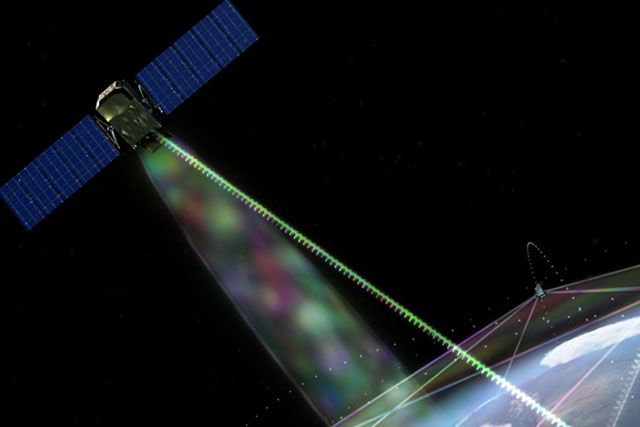
Photo: Courtesy of Raytheon Intelligence & Space
To the ancient Greeks, Argus Panoptes was a giant with a thousand eyes who always kept watch, even in his sleep.
That constant vigilance resonates with those responsible for keeping the United States and its friends and allies safe. It’s why the U.S. Air Force, the Defense Advanced Research Projects Agency and Raytheon Technologies are creating a new space-based blanket of advanced sensors – to keep “eyes always on” in the lookout for potential missile attacks.
“The pace of technology is on a near-exponential curve right now,” said Wallis Laughrey, a vice president of Raytheon Intelligence & Space, a business of Raytheon Technologies. “Our adversaries are testing new weapons that require a new means of detection.”
The challenge is to field those new means quickly. To that end, the Air Force designated Next Gen OPIR – a system of satellites to provide early warning of intercontinental and theater ballistic missile launches – as a Go-Fast program. It replaces the Space-Based Infrared System by providing more survivable and resilient missile warning from geostationary orbit.
The Next Gen OPIR program consists of three GEO and two polar satellites, all of which are expected to be in orbit by 2029.
“Our ability to counter the threat is only as good as our ability to see it,” Laughrey said.
Defense contractor Lockheed Martin turned to Raytheon Technologies to design the payload for its Next Gen OPIR Block 0 resilient missile-warning satellites.
The first geostationary orbiting satellite is scheduled to launch in 2025. Raytheon Technologies’ GEO contract covers development through system-critical design review.
Next Gen OPIR is one piece of the space-based layer. Space-based systems need to be geographically spread out to offer the most coverage, just like ground-, sea- and land-based systems do. The only difference is that when you’re operating from space, you have a lot more territory to cover.
Enter DARPA’s Blackjack program. Blackjack provides another layer of persistent global coverage. Designed to operate in low Earth orbit, also referred to as LEO, Blackjack will network multiple sensors together. Blackjack’s mission is to demonstrate sensors, including OPIR sensors, that are low in size, weight and power, and that can be mass-produced to fit on many different buses from many different providers – for less than $2 million a payload.
Once the sensors are in space, one of their applications could be missile warning.
“The beauty of Blackjack is it’s an autonomous system,” said Mike Rokaw, a director at Raytheon Intelligence & Space. “Once it’s in space, it will be able to task itself – and (be) aware of its health. That means it will be able to automatically adjust to deliver info to the end user, without intervention from the operator.”
To learn more about RI&S’ Space Solutions visit here.





















